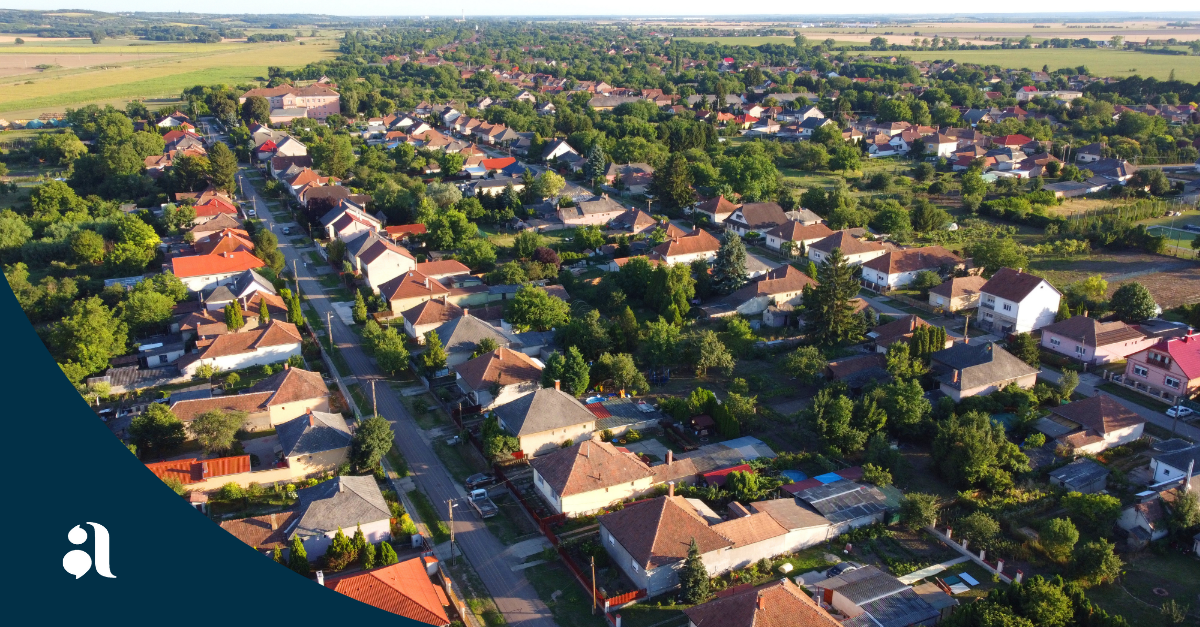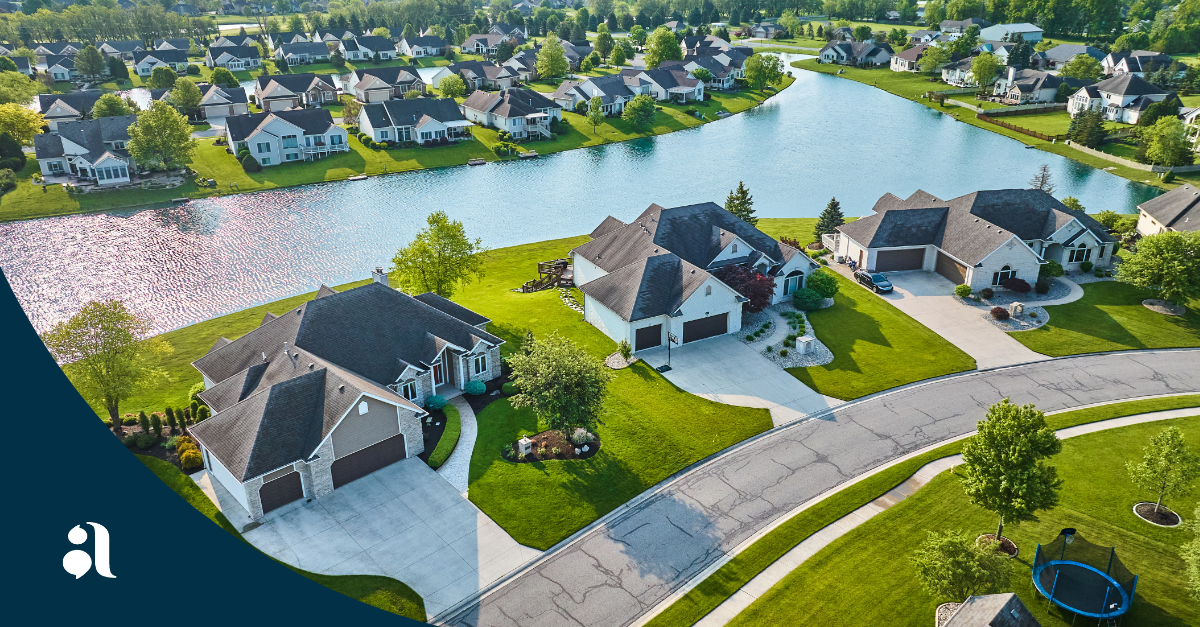
How Long-Term Housing Trends Are Redefining the Way We Live
In today’s rapidly evolving housing landscape, one thing remains constant: change driven by human behavior. In a recent episode of the Alosant Innovator Series, April LaMon sat down with Anja Seng, Manager of Design Lens at the New Home Trends Institute (NHTI), a division of John Burns Research and Consulting. The conversation wasn’t about fleeting design styles or passing aesthetics—it was about deep, research-driven shifts in the way people live, work, and interact with their communities. And more importantly, how these insights shape not only what we build, but why we build it.
As Seng put it, “We really care about those longer-term shifts and trying to fill the gap between what people want and how they want to live or need to live—and what they're being offered.” That gap between aspiration and reality is where transformation begins. This article explores how those long-term housing trends and consumer housing behaviors are shaping the future of community design. We’ll examine what’s driving change, who it affects, and how to respond not with guesswork, but with purpose.
🎧 Want to Hear the Full Conversation?
Tune into the Alosant Innovator Series podcast featuring Anja Seng for deeper insights into how long-term housing trends are reshaping the future of design.
Listen Now
Long-Term Housing Trend: A Trusted Advisor’s View
Understanding a long-term housing trend starts with one essential shift: from assumption to observation. These trends aren’t identified in the color palettes of the season—they’re rooted in years of behavioral data, demographic shifts, and lived human experiences. They emerge when builders, designers, and developers begin listening more and predicting less.
According to Seng, the difference is clear. “We're not really as concerned with, oh, is checkered in or is it a grandmillennial or coastal grandmother? Those types of things are not really what we focus on.” Instead, NHTI is focused on what endures—what persists across cycles and styles.
What Makes a Trend 'Long-Term'?
- Multi-year data sets that track consistency over time
- Behavioral patterns that change how people live, not just how they decorate
- Demographic realities, such as delayed parenthood or shrinking household sizes
- Technological integration, which reshapes daily routines
- Policy and economic shifts, such as inflation, interest rates, and zoning
But recognizing a long-term trend isn’t enough on its own. The real challenge—and opportunity—comes when the industry begins shifting from instinctual decisions to those informed by real consumer data.
The Shift from Intuition to Insight
Traditionally, many housing decisions were made by experienced professionals following their gut instincts. There’s certainly value in experience, but it’s no longer enough. Today’s consumers are informed, digitally savvy, and expect homes to reflect their values and evolving lifestyles. That’s where organizations like NHTI become indispensable.
Seng shared that the Institute began “to help give people in this industry the confidence and tools and a really collaborative research-fueled environment to design better communities and homes.” At its core, it’s about moving from anecdotal design to actionable insight.
Key Benefits of Research-Driven Design
- Reduced guesswork in product planning
- Clarity in feature prioritization
- Improved alignment with evolving buyer expectations
- Ability to respond quickly to emerging preferences
With that foundation of insight, the industry is better positioned to understand the difference between what’s merely popular—and what’s truly transformative.
Rethinking Trend vs. Transformation
In a landscape saturated with aesthetic hashtags and viral Pinterest boards, the temptation to chase short-term trends is strong. But designing communities based on passing visuals—without understanding the behaviors driving them—leads to communities that may look nice, for the moment, but fail to serve.
Seng emphasized that NHTI’s lens is different. “We're looking at all parts of how these long-term shifts come to be... then looking at what is the design implication.” That means tracking not just what’s being bought, but why.
When comparing short-lived design fads to truly impactful housing trends, the distinction becomes clear. For example, features like shiplap walls, bold kitchen backsplashes, and open shelving have become popular through social media and design shows—but they reflect stylistic preferences more than lasting lifestyle needs.
In contrast, multigenerational floorplans, walkable mixed-use environments, and smart technology integration represent transformative trends. These elements aren’t about aesthetics; they respond directly to how people live, work, and interact with their homes and communities over time. They are functional adaptations rooted in real consumer housing behavior and signal a long-term housing trend rather than a passing phase.
To understand what’s truly transformative, we must explore the core forces that are shaping how consumers behave and what they expect from their homes.
Demographic Forces Shaping Housing
Sociodemographic trends are among the most influential forces in the housing industry. From delayed family formation to increased single-person households, these shifts dramatically alter what buyers want—and when they want it.
Seng pointed to the age of first-time motherhood as a telling metric: “If the median age to give birth to your first child was 24 back in 1984, but it's 30 now, that's a big difference.” That six-year delay has ripple effects, influencing everything from when people buy homes to the type of community they seek.
This shift is reflected in the 2025 Home Buying Insights by Decade Born report, where NHTI found that mixed-use communities now rank as the top choice among buyers—surpassing even family-friendly and nature-forward options. Many buyers born in the 1990s and 2000s, who now represent the largest share of the market, fall into the age demographic of starting a family. For them, being close to work, retail, and entertainment isn’t just convenient—it’s essential.
Key Demographic Shifts
- Older first-time homebuyers
- Diverse household formations, including co-living and multigenerational living
- Increased demand for aging-in-place solutions
These demographic shifts feed directly into consumer housing behavior, influencing not just the structure of the home, but its emotional and functional value.
Consumer Housing Behavior in Transition
What consumers want in a home is no longer just space and shelter—it’s purpose and identity. The post-pandemic era has dramatically reshaped housing behavior, with buyers now emphasizing emotional fulfillment, wellness, and lifestyle alignment.
According to Seng, NHTI doesn’t just look at what consumers are doing, but “how they feel and how that is going to then impact the decisions that they make.” It’s a shift from transactional to transformational.
Behavioral Shifts Observed
- Desire for personalization and authenticity in home features
- Trade-offs in size or location in favor of affordability and lifestyle
- Higher emotional expectations from homes and communities
These emotional and practical demands are reflected most vividly in how people work—and where they work. Let’s look at how remote work continues to drive home design innovation.
Remote Work and Its Design Impact
Long before COVID-19, some professionals were already working remotely. But the pandemic acted as an accelerant, making remote and hybrid work an expected norm for many industries. Homes suddenly had to adapt—not only to function as living spaces but as productive, comfortable workplaces.
Seng pointed out, “We knew people who were working remotely before COVID, and then something like that big shock just accelerates it.” This isn’t a temporary pivot; it’s a deep-seated shift that’s influencing architectural decisions across the board.
Design Considerations for Remote Work
- Dedicated office nooks or multi-functional spaces
- Acoustic insulation for video calls and focus time
- Proximity to third spaces like shared co-working lounges in the community
Just as work-life integration reshaped interiors, the rise of digital tools has redefined how homes function—with smart technologies now playing a central role.
Smart Homes as Standard
What was once marketed as a luxury is now expected as standard: smart home integration. From lighting and HVAC to access control and security, technology is embedded in daily routines. This reflects a larger long-term housing trend toward responsive, user-driven design.
The expectation is no longer “Does this home have smart features?” but “How well does this technology serve me?”
Key Features Consumers Now Expect
- Smartphone-controlled climate and security systems
- Voice-activated lighting and appliances
- Integration with community apps for amenities and communication
But tech isn’t just about convenience—it also plays a role in fostering connection, especially as society grapples with an often invisible, yet widespread, loneliness epidemic.
The Rise of Third Places
Homes aren’t just private spaces anymore—they’re launchpads to something greater. As Seng described, “I hear a lot of talk of this loneliness epidemic and people craving connection... and then we look at a survey question... walkable, mixed-use, that has risen to the top recently.”
This growing need for “third places”—communal environments beyond home and work—reflects a deep shift in consumer housing behavior. People want connection built into their environment.
Community Features That Address Loneliness
- Parks, plazas, and neighborhood cafes
- Shared gardens and dog parks
- Clubs, classes, and informal social programming
Third places are often part of larger community plans, which brings us to one of the most discussed desires among modern homeowners: walkability and mixed-use design.
Walkability and Mixed-Use Aspirations
Walkable communities are no longer just desirable—they’re aspirational. They reflect not only a rejection of isolated suburban sprawl but a return to integrated living where work, leisure, and essentials are all within reach.
When NHTI surveyed consumers about aspirational communities, walkability and mixed-use features ranked highest. These desires reflect a shift toward lifestyle-centered planning.
Design Elements that Support Walkability
- Sidewalks and bike lanes
- Local retail integrated with residential
- Pocket parks and gathering plazas
These physical aspects are only part of the story. The emotional undercurrents—how people feel in their homes—are driving another layer of behavioral change.
Sentiment Over Sales
You can have the perfect floorplan, but if it doesn’t feel right, today’s buyer may walk away. Emotional sentiment—ranging from safety and pride to comfort and control—is becoming central to consumer decision-making.
NHTI tracks these emotional markers in their surveys. As Seng said, “Not just how they're acting, but like how they feel.” This shift means builders must design with empathy.
Designing with Sentiment in Mind
- Spaces that reduce stress and promote wellbeing
- Layouts that support personal rituals and routines
- Community designs that feel inclusive and welcoming
And few emotions run deeper than the need to feel connected. Let’s look more closely at how the housing industry is addressing the loneliness epidemic with design.
The Loneliness Epidemic
The world may be more connected than ever, yet people report feeling more alone. This dissonance is reshaping what “home” means. For many, home is now a social hub—a place to find connection, not just retreat.
This long-term housing trend calls for intentional placemaking. It means designing neighborhoods with interaction in mind.
Design Responses to Social Isolation
- Front porches and semi-private outdoor spaces
- Community gathering spots and regular events
- Layouts that invite casual encounters
Turning emotional needs into physical realities requires more than data—it requires a translation layer. That’s where Design Lens comes into play.
From Insight to Design
The brilliance of NHTI’s model is how it marries research with real-world execution. Seng explained, “The consumer research is what do they want? The Design Lens and our design research is, okay, what does that look like?”
Design Lens acts as a bridge between abstract insights and architectural expression.
What Design Lens Offers
- Case studies of successful communities and features
- In-depth builder interviews revealing design intent
- Photography and data woven into a cohesive narrative
These insights are only as valuable as their ability to be applied. Monthly survey reports ensure that builders always have up-to-date, actionable guidance.
Collaboration is Key
Building communities that align with long-term housing trends takes more than vision—it requires collaboration. And too often, as Seng described, industry stakeholders operate in silos.
“There was an architect who wanted to use bullet windows... the builder said they were too difficult to install... then the product manufacturer chimed in with a new solution.” This real-time, cross-functional problem-solving is where innovation happens.
Collaborative Benefits
- Reduced friction in execution
- Shared understanding of goals and limitations
- More innovative, cost-effective solutions
These collaborative exchanges are formalized through NHTI’s councils and think tanks, where strategy meets dialogue.
The Role of Councils and Think Tanks
NHTI hosts five distinct councils—ranging from home design trends to master-planned communities. Each functions as a think tank, where industry veterans share problems, pose questions, and refine ideas.
As Seng put it, “You come to council, you have to be involved in the discussion.” These aren’t networking events—they’re work sessions.
Councils At-A-Glance
- Home Design Trends
- Consumer Trends
- Build-to-Rent
- Master Plan Trends
- Future Trends (plus new Private Builder and Multifamily councils on the way)
With such a thoughtful approach to strategy, it’s easy to see why short-term trends can’t compete. Let’s take a closer look at why they fall short.
Hyper-Localized Inspiration
A great community in Bozeman, Montana may solve different problems than one in Tampa, Florida—but both can inspire. NHTI’s breadth of case studies ensures that location-specific consumer housing behavior is respected and leveraged.
“Every time we meet, we plan this four-hour meeting… the amount that people share… such a collaborative group,” Seng shared. That includes regional voices often overlooked in larger national datasets.
Why Local Context Matters
- Climate, regulation, and culture vary regionally
- Consumer priorities differ based on local economics
- Design solutions must be adaptive, not prescriptive
This level of detail makes Design Lens more than a gallery—it’s a diagnostic tool.
Expanding the Definition of Home
Home is no longer just a place—it’s an ecosystem. A workplace, a wellness hub, a refuge, a social container. Today’s design must reflect those expanded expectations.
New Dimensions of Home
- Emphasis on wellness: air quality, natural light
- Tech integration for accessibility and comfort
- Community as a service—not just an amenity
📣 Hear from the Experts Themselves
Join April LaMon and Anja Seng in an eye-opening conversation about what today’s homeowners really want—and how to design for tomorrow.
Listen to the Innovator Series
Ready to Build Communities Aligned with the Future of Living?
At Alosant, we don’t just create community apps—we partner with developers and builders to deliver thoughtful, tech-enabled solutions that reflect long-term housing trends and evolving consumer housing behavior. If you're designing places where people truly want to live, work, and connect, we're here to help amplify your brand—not ours.
Let’s build smarter, together.
Explore how Alosant’s platform is built with you.
Conclusion
The long-term housing trend is not about what’s stylish—it’s about what’s sustainable. And consumer housing behavior isn’t just what people buy—it’s how they live. In conversation with Anja Seng and through the lens of the New Home Trends Institute, we see clearly: transformation in housing isn’t about more of the same. It’s about asking better questions, listening harder, and designing with empathy and evidence.
At Alosant, we believe in building with you, amplifying your brand—not ours—and serving as your trusted advisor in this evolving industry.
Long-term Housing Trends FAQ’s
Will the housing market go up in the next 5 years?
Moderate, overall growth is expected—but especially at a slower pace than recent years. Forecasts from Fannie Mae and J.P. Morgan project annual home price increases in the 3–4% range from 2025 to 2026 RealWealthJPMorgan ChaseGlobal Property Guide. Mortgage rates near 6–7%, supply constraints, and consumer caution all suggest that while price growth will continue, it may remain modest and uneven across regions Financial Times. Political uncertainties, especially policy shifts on immigration, tariffs, and Fed decisions, could further influence future direction.
What will housing look like in 2025?
Housing in 2025 is expected to be dimensionally different—with affordability challenges and inventory shifts shaping the market. Home prices may slow or even dip marginally in some markets (e.g., Zillow projects a 0.9% to 1.7% decline from mid‑2025 to mid‑2026) Business Insider+15Fast Company+15The Times+15. Sales are likely to remain sluggish, possibly near 30-year lows as buyers delay purchases amid high mortgage rates around 6.7–7% Business Insider+5Investopedia+5New York Post+5.
Yet, the recent earnings surprises from D.R. Horton and PulteGroup suggest that not all builders are waiting for conditions to improve—they’re actively shaping them. Both companies exceeded Wall Street expectations, maintaining strong margins and leveraging incentives to convert hesitant shoppers into buyers. Their stock rallies signal growing investor confidence that demand isn't gone—it's just evolving.
Will the housing market be better in 2025 or 2026?
The near-term outlook favors 2026 over 2025 as mortgage rates gradually ease toward 6.0–6.5% and inventory continues to adjust Norada Real Estate+15Mortgage Professional+15Investopedia+15. This shift may gradually increase buyer activity and price stabilization, though forecasts remain mixed by region. Early to mid‑2026 is viewed as the most plausible window for improved conditions, but the trajectory will depend heavily on Fed policy, macroeconomic stability, and consumer confidence.
Further Reading or Listening
- New Home Trends Institute
- Learn more about Anja Seng
- Smart Growth America
- Alosant Innovator Series
- McKinsey: The Future of Remote Work
- Brookings: Housing Affordability and Policy
- The Value of a Lifestyle Management Platform for Master Planned Communities
- Resident Engagement Technology for Modern Communities
- Build Belonging with a Property Manager Communication Tool



